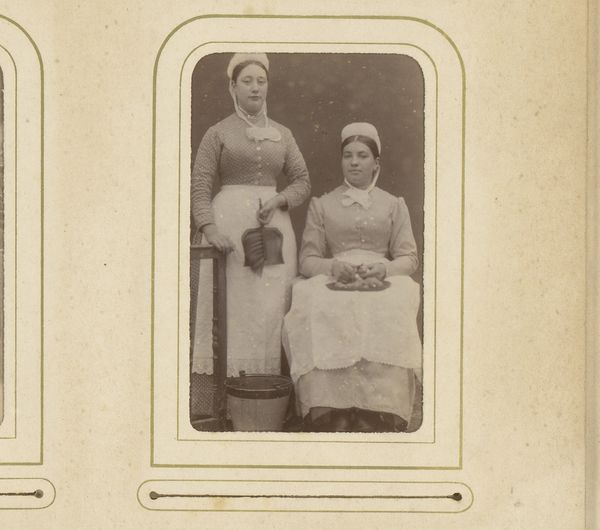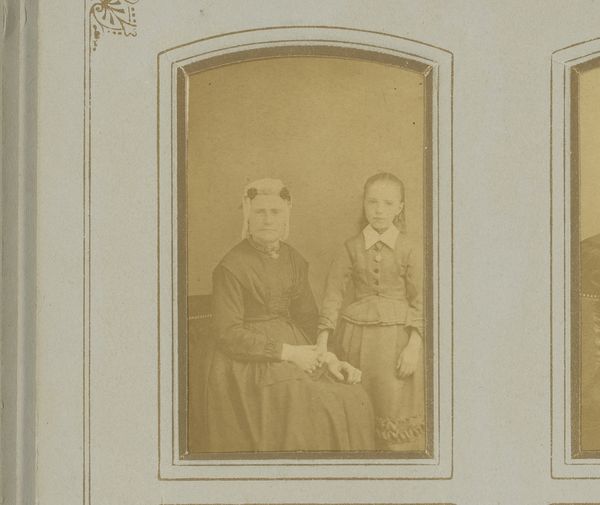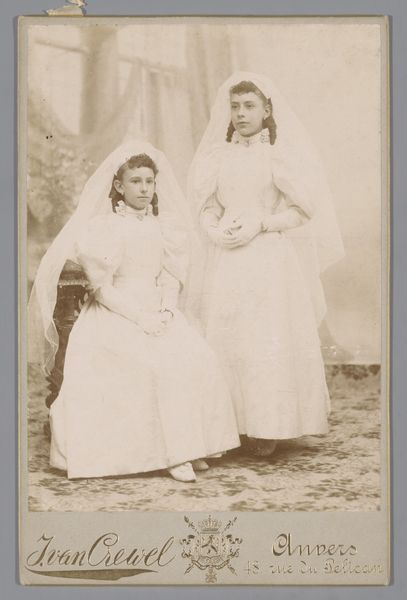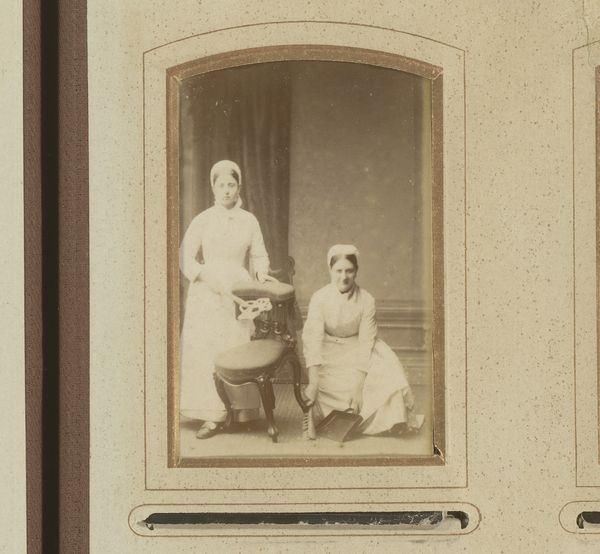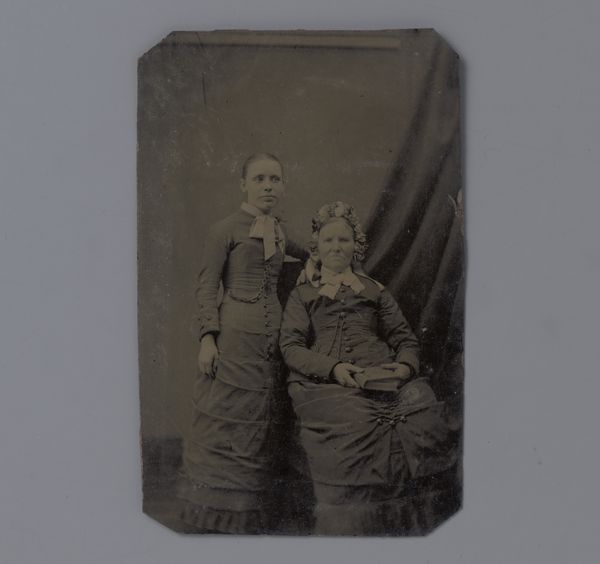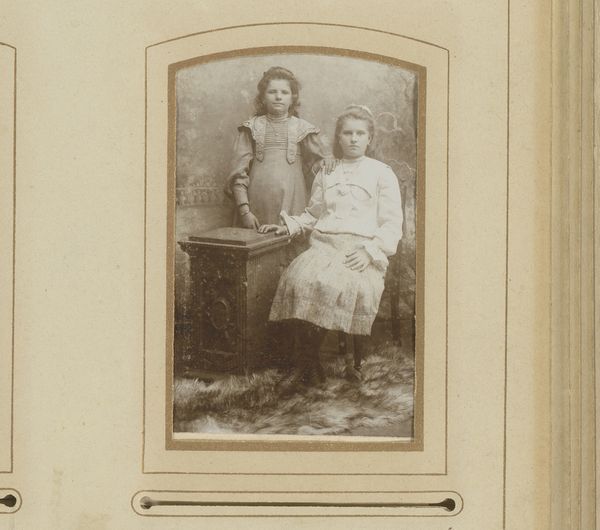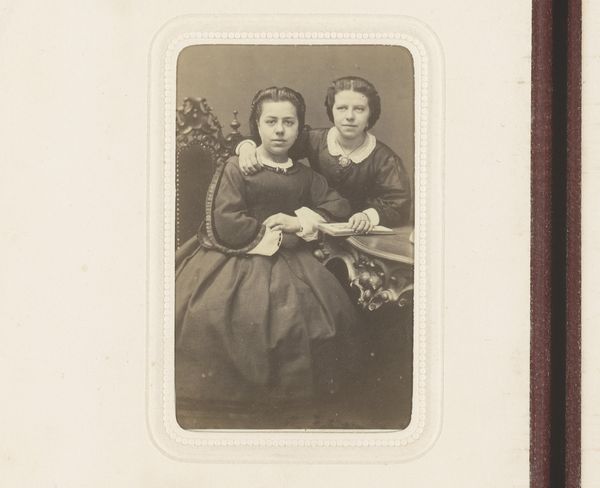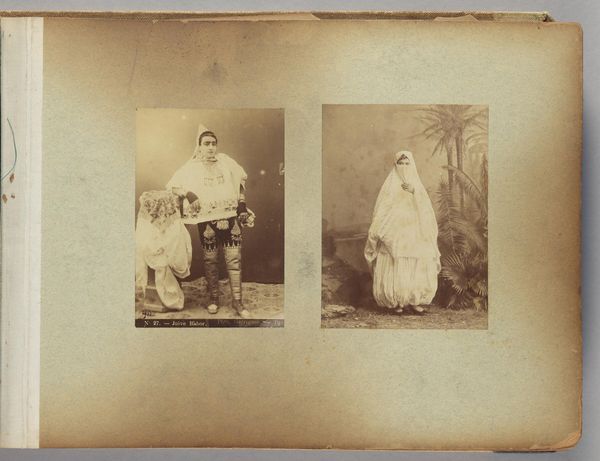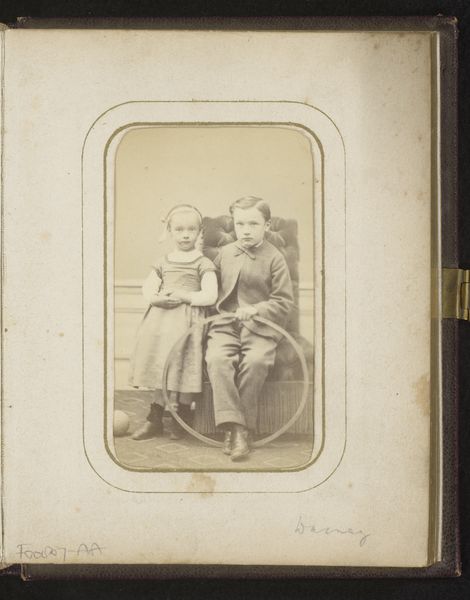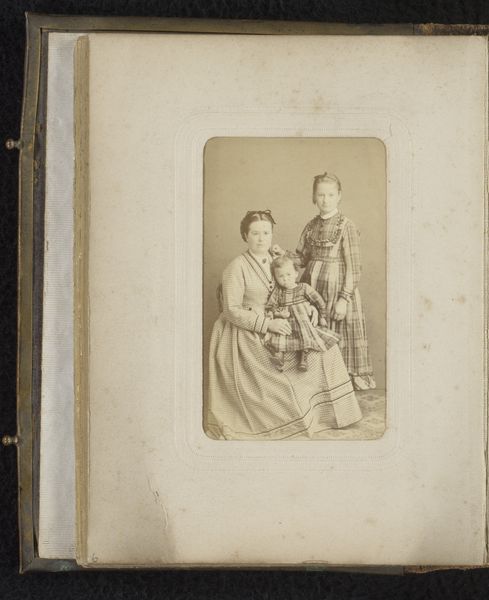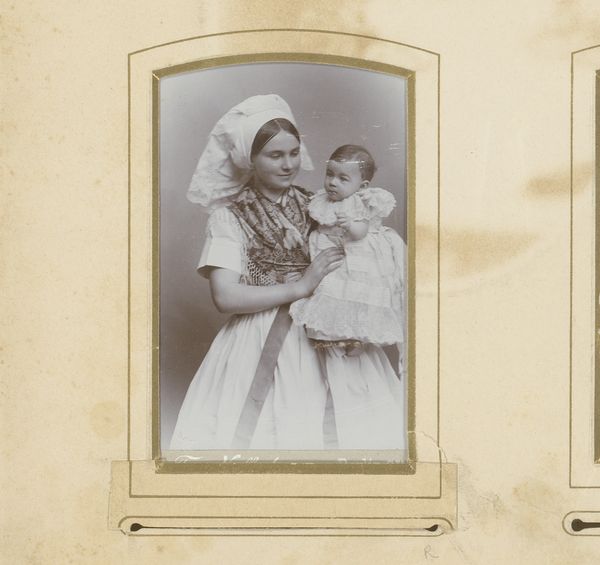
photography
#
portrait
#
dutch-golden-age
#
photography
#
historical photography
#
historical fashion
#
realism
Dimensions: height 84 mm, width 51 mm
Copyright: Rijks Museum: Open Domain
Editor: Here we have "Portrait of Two Women in Scheveningen Costume" by Jacobus van Koningsveld, dating from around 1865 to 1880. It’s a photographic portrait, and there’s something about the formality and the muted tones that feels quite striking. What historical narratives do you think this piece brings to the surface? Curator: Well, first off, notice that photography at this time was still relatively novel, so the very act of capturing this image would have carried social weight. We need to consider what it meant for these women, likely from a specific community within Scheveningen, to present themselves in this way. Are they presenting an accurate representation of their everyday attire, or something slightly more staged? Editor: That’s a great point, the staging of it. Do you think that this image, therefore, played some role in constructing and reinforcing a particular idea about the cultural identity of Scheveningen? Curator: Absolutely. These images were often circulated, contributing to how people understood regional identities within the Netherlands. The photograph might be used to reinforce ideas about tradition, authenticity, and perhaps even a sense of separateness from more modern, urban cultures. Think about who would have consumed such images: Tourists? Those in other parts of the Netherlands? And how might that influence the subjects themselves? Editor: So the subjects themselves are becoming conscious of the fact they're becoming symbols of something else to outsiders? Curator: Precisely! It becomes a performance of identity, influenced by both internal community values and external expectations. This photo isn’t just a record; it’s an active participant in a cultural dialogue. It raises questions about how groups want to be seen, and who gets to decide how they are represented. Editor: That’s fascinating. It makes you think about all the layers of meaning embedded in what initially seems like a simple portrait. It is both something truthful, and something quite deliberately fabricated. Curator: Exactly! That tension between documentation and performance is precisely where much of the interest, and the art historical analysis, lies.
Comments
No comments
Be the first to comment and join the conversation on the ultimate creative platform.
